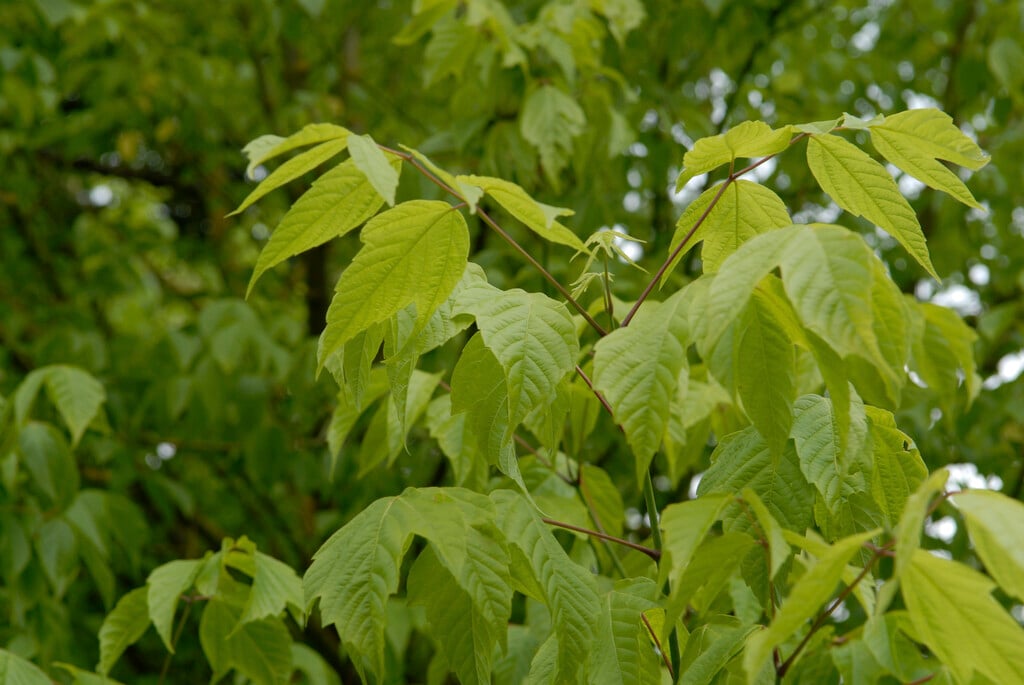Acer negundo 'Auratum'
gold-edged box elder
A deciduous tree, to around 8m high, with pinnate leaves divided into oval-shaped leaflets that emerge bright yellow in spring, and turn paler as they mature. Small yellow-green flowers are borne in early summer, with male and female flowers produced on separate plants; male flowers appear in dense clusters and female flowers in long loose tassels. This cultivar is somewhat slower growing than the species
Size
Ultimate height
4–8 metresTime to ultimate height
5–10 yearsUltimate spread
4–8 metresGrowing conditions
Moisture
Moist but well–drainedpH
Acid, Alkaline, NeutralColour & scent
| Stem | Flower | Foliage | Fruit | |
| Spring | Yellow | |||
|---|---|---|---|---|
| Summer | Yellow Green | Yellow Green | ||
| Autumn | Yellow | |||
| Winter |
Position
- Full sun
- Partial shade
Aspect
East–facing or South–facing or West–facing
Exposure
Exposed or Sheltered Hardiness
H6Botanical details
- Family
- Sapindaceae
- Native to GB / Ireland
- No
- Foliage
- Deciduous
- Habit
- Columnar upright
- Genus
Acer can be deciduous trees or large shrubs with paired, often palmately-lobed leaves and small flowers followed by characteristic winged fruits. Many have fine autumn colour, and some have ornamental stems
- Name status
Accepted
How to grow
Cultivation
Grow in moisture-retentive, well-drained soil in sun or part shade
Propagation
Suggested planting locations and garden types
- Architectural
- City and courtyard gardens
- Cottage and informal garden
- Low Maintenance
Pruning
Minimal pruning required; see pruning group 1. Prune from late autumn to mid-winter only
Pests
May be susceptible to Acer gall mite, aphids, caterpillars and horse chestnut scale
Diseases
May be susceptible to Verticillium wilt, Acer leaf scorch and honey fungus
Get involved
The Royal Horticultural Society is the UK’s leading gardening charity. We aim to enrich everyone’s life through plants, and make the UK a greener and more beautiful place.
